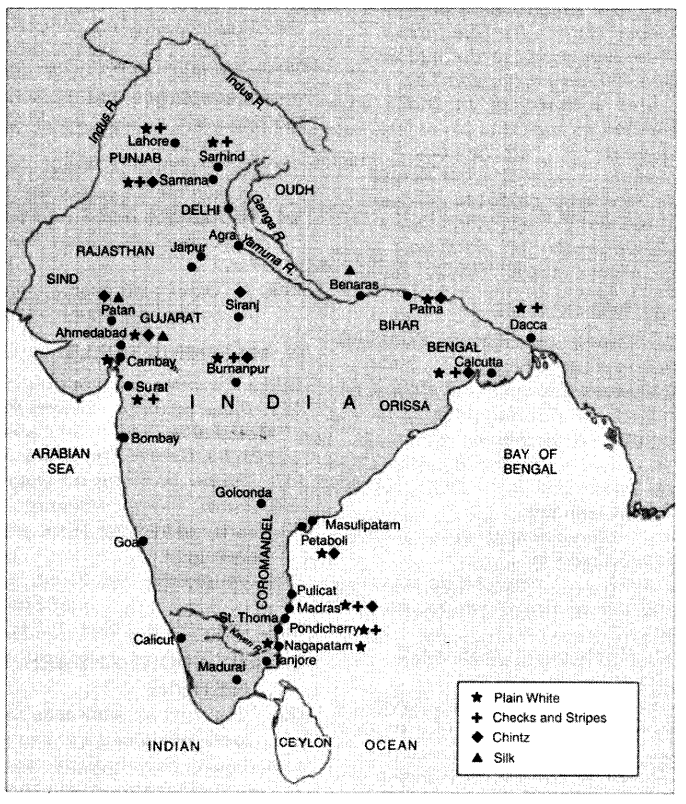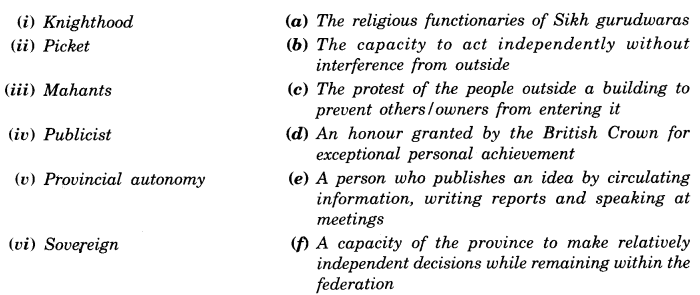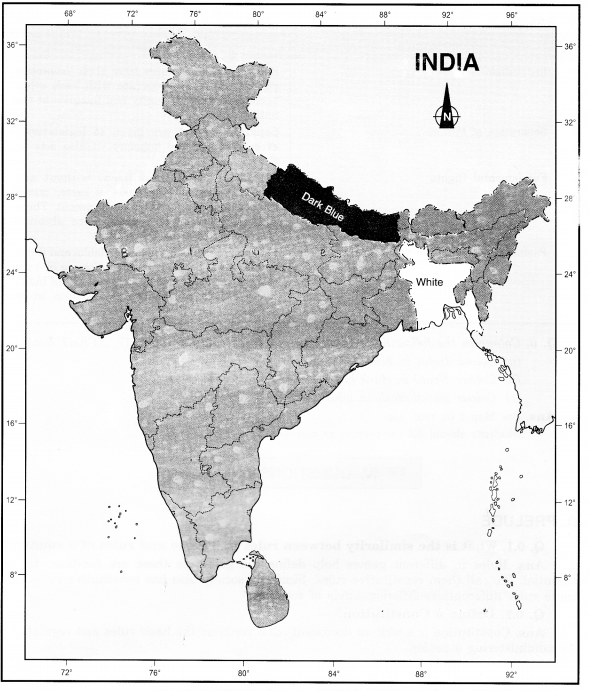NCERT Solutions for Class 8 Social Science History Chapter 1 How, When and Where
These Solutions are part of NCERT Solutions for Class 8 Social Science.Here we have given NCERT Solutions for Class 8 Social Science History Chapter 1 How, When and Where
Question 1.
State whether True or False:
(a) James Mill divided Indian history into three periods—Hindu, Muslim, Christian.
(b) Official documents help us to understand what the people of the country think.
(c) The British thought surveys were important for effective administration.
Answer:
(a) True
(b) False
(c) True
Question 2.
What is the problem with the periodisation of Indian history that James Mill offers?
Answer:
James Mill tried to divide Indian history into Hindu, Muslim, and Christian periods. This periodization is based on religious lines that there was a phase for which the Hindus were the rulers and others were ruled. Then came the phase of the Muslims or Christians (i.e., Britishers). He had a colonial bent of mind and thought Asians to have .poorly civilized. He thought Europeans to be superior. So, in fact, through this periodisation he tried to divide the people with their own specific identity, which was not true. During the Muslim rule, there were thousands of Hindu kings. The same was the case during the Christian period when India had thousands of local Hindu and Muslim princely states. So, this is not a proper periodisation of Indian History.
Question 3.
Why did the British preserve official documents?
Answer:
The British believed that by preserving official documents, it would be easier for them or any other persons to know about the decisions taken in the past. One can study the notes and reports that were prepared in the past. Their copies may be prepared and used in present time if needed so.
Question 4.
How will the information historians get from old newspapers be different from that found in police reports?
Answer:
Usually, the newspaper reports are not biased. These reports explain the fact as it was. Most of the time, these do not try to manipulate the event. These represent the true story of the event with every detail. On the other hand, the official reports are usually biased. These are written as per the will of the senior officials. These reports may carry the biased view of the reporting police officer. Thus if the historians are based only on the police reports, they may become misguided.
Question 5.
Can you think of examples of surveys in your world today? Think about how toy companies get information about what young people enjoy playing with or how the government finds out about the number of young people in school. What can a historian derive from such surveys? Answer to be attempted by the students.
Answer:
- Today, various types of surveys are carried on both by the government and private enterprises. The government carries surveys like a census in which various details of a family are collected. Similarly, Companies carry surveys for the use of their products and to find prospective customers. For example, the survey is conducted for various purposes regarding soap, shampoo, vehicles, etc. used by the people.
- The toy companies prepare a questionnaire and print them on a sheet of paper. Their representatives visit the school and distribute these papers among young people after school is over. Young people are asked to tick (✓) or cross (×) options of their choice. Then they get these papers back. In their office, they obtain data from these papers and derive their conclusion about the play liked by young people.
- The government carries out a census every 10 years. Each household provides details of its children. It is from this detail that the government comes to know about the number of young people in the school. Also, it can collect data from the school directly.
- From these data, historians can come to know about the education level and sportsmanship of the generation under survey. Also, they can derive information on the household size, etc.
Objective Type Questions
1.Match the following:

Answer:
(i) (c)
(ii) (a)
(iii) (e)
(iv) (b)
(v) (d)
2. State whether True or False:
- Lawrence was a prominent Viceroy of India. (True)
- Curzon was a Governor-General of India. (True)
- James Mill published a newspaper in 1817. (False)
- We need to divide history into different periods. (True)
- The British came to India to know about its great culture. (False)
- History deals with changes that occur over time. (True)
3. Fill in the blanks:
- The last Viceroy of British India was Lord Mountbatten
- James Randel prepared the first map in 1782.
- James Mill divides Indian history into three periods.
- The British preserved all-important letters and documents
- In Mill’s idea of history, the period before British rule was one of darkness.
MULTIPLE CHOICE QUESTIONS
Choose the correct answer:
1. Who was the last Viceroy of India?
(a) Lord Canning
(b) Lord Mountbatten
(c) Ripon
(d) Lord Wellesley
2. Medieval period was
(a) the old period of history
(b) the period associated with the growth of all the forces of modernity
(c) none of the above
3.The British thought surveys were important for
(a) writing history
(b) effective judgment
(c) effective administration
(d) none of these
4.The British preserve official documents because
(a) the preserved documents reveal the progress made by country in the past
(b) one can study the notes and reports which were prepared in the past
(c) their copies may be made and used in modern times
(d) all of the above
5. Which one of the sources do historians use in writing about the last 250 years of Indian history?
(а) Official records of the French administration
(b) Official records of the British administration
(c) Official records of the Church administration
(d) None of the above
6. Which of the following is NOT the period of division of Indian History by James Mill?
(a) Hindu
(b) Muslim
(c) Christians
(d) Sikhs
7. Which is NOT the source of describing history?
(a) Diaries of people
(b) Conversation between two people
(c) Accounts of pilgrims and travellers
(d) Autobiographies of important personalities
8. The National Archives of* India came up in the
(a) 1910s
(b) 1920s
(c) 1930s
(d) 1940s
We hope the NCERT Solutions for Class 8 Social Science History Chapter 1 How, When and Where, help you. If you have any query regarding NCERT Solutions for Class 8 Social Science History Chapter 1 How, When, and Where, drop a comment below and we will get back to you at the earliest.
















